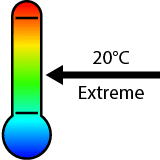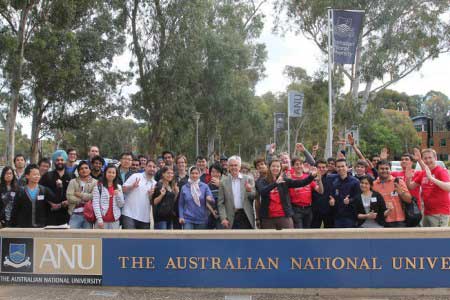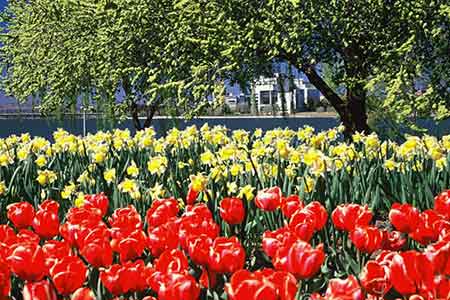Canberra is Australia’s capital and one of its few inland cities. The city and the territory it occupies within New South Wales (NSW) were designated in the early 1900s as the home for Australia’s parliament. Canberra is highly planned, featuring an artificial lake and roads fanning out from Parliament House.
Plans for Canberra also included the Australian National University (ANU), which was constructed next to the lake. The city centre is on one side of the campus and botanical gardens on the other. A 2nd university, the University of Canberra, is a short drive away.

The city is an easy place to live in and study and attracts its fair share of international students. It has excellent infrastructure, including the best roads in the country and long networks of paths for cycling and walking. There is also plenty of space. The city is spread across a wide area, with large tracts of land set aside as parks and bush reserves.
Geography and climate
 Canberra is 150 km inland of the NSW south coast. It is 280 km SW of Sydney and 660 km NE of Melbourne.
Canberra is 150 km inland of the NSW south coast. It is 280 km SW of Sydney and 660 km NE of Melbourne.
The city is built on elevated plains (about 580 metres above sea level) that were formerly eucalyptus forest. The city’s main water features, Lake Burley Griffin, was formed by damning the Molongolo River.
Canberra experiences seasonal weather extremes. While the air is dry and generally still, temperatures vary significantly across the seasons. Frosts are common in winter, with temperatures often dipping 3-4 degrees below zero overnight. Summers are warm, often bringing extended spells of 30+ degree daytime highs. Rainfall is relatively light and spread throughout the year.
Universities
Canberra’s universities have slightly different roles. ANU is a prestigious university with a strong research focus and large post-graduate program (which is popular with interstate and study abroad students). The University of Canberra is more teaching focused and satisfies local demand for university places.
You need an ATAR of 80 to get into most ANU programs, compared to just 60 at Canberra Uni.
The universities are fairly small by Australian standards, with a combined enrolment around 43,000. International students make up around 40% of ANU enrolments, and just over 20% for UC.
ANU is among Australia’s top-ranked universities. It has an outstanding research reputation, is rated highly by students, and its graduates succeed in securing jobs or pursuing further study.
The University of Canberra gets high ratings for teaching quality. It offers courses in 6 main areas: Applied Science; Health; Art and Design; Business, Government and Law; Education; and Information Sciences and Engineering. Its campus is about a 10-minute drive from the city centre – near to Belconnen, one of Canberra’s major urban centres.
Canberra living
Canberra is a much quieter place to live in than you might expect for a city with 470,000 people. The efficient road network allows people to quickly move out of Civic (the CBD) and into suburbs that spread for tens of kilometres in all directions.
The suburban areas are quite self-sufficient. Every suburb has a mini shopping complex, and there are several major shopping centres strategically positioned across the city. Suburbs also have their own parks and playgrounds.
Canberra’s suburban lifestyle doesn’t affect students very much because the universities have campus locations near Civic.
Although shopping is decentralised, the city centre is easily the most popular place for going out. Friday and Saturday nights are usually very busy. In the late hours, taxis can be hard to come by as large numbers of people travel home to outer suburbs.
Canberra has a fairly standard mixture of Asian and European restaurants, Irish and boutique bars, and nightclubs. It also has licensed clubs that are virtually free to join and offer cheap meals and drinks.
The city has an environment that is conducive to studying. It is relatively free of distractions. The bush reserves and parks give it a sense of tranquility. National monuments, Parliament House and the immaculately designed layout make you feel as though you are in an important place.
Is Canberra a Good Place to Study?
Canberra is one of the best places to study in the world. The cool climate in winter, open spaces, natural environment, and quiet vibe are highly conducive to being a calm and focused student. The city offers a good balance of things to do without too many distractions.
Additionally, this is a public service city. The population in general is highly educated. With seemingly everyone around being involved in education or government, you won’t easily lose focus on the importance of doing well academically.
Other Unis with a Canberra Campus
In addition to ANU and the University of Canberra, other universities offer specialised courses in the city.
Australian Catholic University (ACU)
ACU’s Signadou Campus offers degrees in education, theology, and health sciences.
Charles Sturt University (CSU)
CSU’s Canberra centre focuses on theology and religious studies.
University of New South Wales (UNSW) Canberra
Located at the Australian Defence Force Academy (ADFA), UNSW Canberra specialises in engineering, IT, science, and arts, with a strong focus on defence-related studies.



